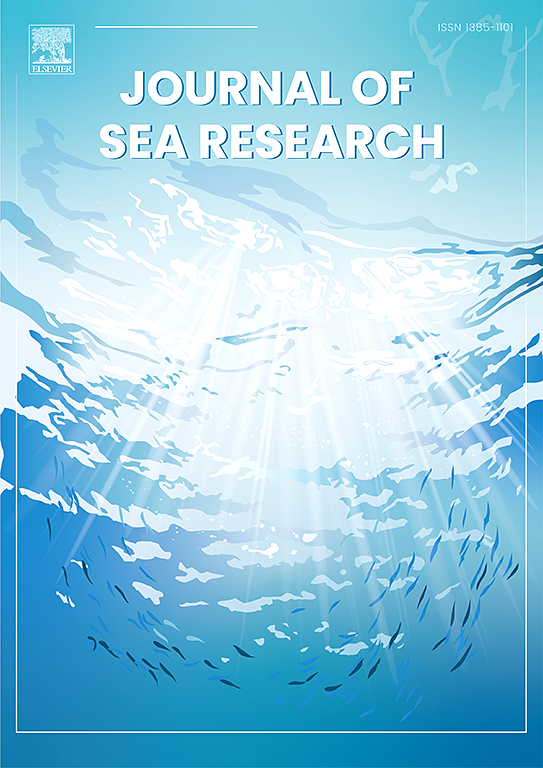Decadal trends in macrobenthic communities in offshore wind farms: Disentangling turbine and climate effects
IF 2.9
4区 地球科学
Q2 MARINE & FRESHWATER BIOLOGY
引用次数: 0
Abstract
We present results of a study covering 13 years of data (2008–2020), investigating for the first time the combined impacts of offshore windfarm (OWF) turbine-related and climate-related variables on soft-sediment macrobenthic communities in the Southern North Sea, focusing on two Belgian OWFs, Belwind and C-Power. We hypothesized that both turbine presence alongside climate change would affect macrobenthos in the long-term. Our analysis revealed that climate variables, particularly sea surface temperature (SST) influenced macrobenthos abundance, species richness and diversity. Species richness was additionally affected by the North Atlantic Oscillation (NAO). While most community indices increased with rising SST, diversity declined with higher temperatures. Our analysis supported that the already known short-term (max. 3 years) turbine-related impacts are consistent through time (13 years). Sediments near turbines and in deeper waters were richer in organic matter, characterized by finer sand, and supported more enriched soft-sediment communities compared to locations further away. A transition from the originally prevailing Nephtys cirrosa community towards a more diverse macrobenthic community was observed near the turbines. Our study emphasizes the need for long-term studies and the importance of distinguishing turbine presence from climate change effects when assessing the impacts of OWFs on marine ecosystems.

海上风电场大型底栖生物群落的年代际趋势:解开涡轮机和气候影响的纠缠
我们介绍了一项研究的结果,该研究涵盖了13年(2008-2020)的数据,首次调查了海上风电场(OWF)涡轮机相关变量和气候相关变量对北海南部软沉积物大型底栖生物群落的综合影响,重点是两个比利时的OWF, Belwind和C-Power。我们假设涡轮机的存在和气候变化都将长期影响大型底栖动物。结果表明,气候变量对大型底栖动物的丰度、物种丰富度和多样性有显著影响,尤其是海温。物种丰富度还受到北大西洋涛动(NAO)的影响。大部分群落指数随海温升高而增加,多样性随温度升高而下降。我们的分析支持已知的短期(最大)。3年)与涡轮机相关的影响是一致的(13年)。涡轮机附近和较深水域的沉积物有机质更丰富,其特征是沙子更细,与更远的地方相比,它们支持更丰富的软沉积物群落。在涡轮机附近观察到从最初盛行的Nephtys cirrosa群落向更多样化的大型底栖生物群落过渡。我们的研究强调了长期研究的必要性,以及在评估海洋生态系统影响时区分涡轮机存在与气候变化影响的重要性。
本文章由计算机程序翻译,如有差异,请以英文原文为准。
求助全文
约1分钟内获得全文
求助全文
来源期刊

Journal of Sea Research
地学-海洋学
CiteScore
3.20
自引率
5.00%
发文量
86
审稿时长
6-12 weeks
期刊介绍:
The Journal of Sea Research is an international and multidisciplinary periodical on marine research, with an emphasis on the functioning of marine ecosystems in coastal and shelf seas, including intertidal, estuarine and brackish environments. As several subdisciplines add to this aim, manuscripts are welcome from the fields of marine biology, marine chemistry, marine sedimentology and physical oceanography, provided they add to the understanding of ecosystem processes.
 求助内容:
求助内容: 应助结果提醒方式:
应助结果提醒方式:


